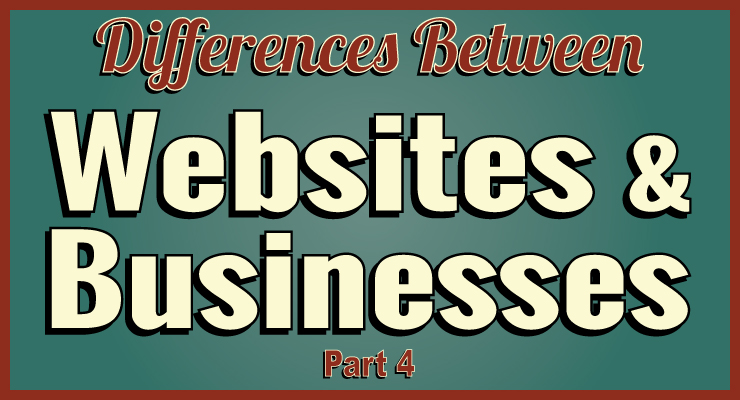Key Element: Price
Price is one of the most obvious differences between websites and businesses. There’s an old saying that goes, “Where there’s smoke, there’s fire.” Well, where there’s a price, there’s a sale. And where there’s a sale, there’s business. The very essence of business is the sale of something.
Think of this way: Websites exist to tell you something. Businesses exist to sell you something.
If there’s no sale, there’s no business and you’re back to being an idea. Let’s examine four different prices that factor into the sales of a successful business. They are the Buying Price, the Market Price, the Advertised Price, and the Selling Price. Here’s how they work.
Buying Price
The Buying Price is the amount you pay to aquire, create, or manufacture your product. The object is to get this price as low as possible by minimizing your hard costs and negotiating your soft costs (see the section below for more on hard and soft costs). The lower your Buying Price, the more you stand to make on the sale of your product.
Market Price
The Market Price is the average amount that people pay for the same or comparable products when they buy them from your competitors. If you can buy flashlights at $5 each, it would be great if you could sell them at $50 dollars each. However, if all your competitors are selling the same flashlights for $25 each, you’ll have a hard time charging more than that.
Advertised Price
The Advertised (or Asking) Price is the amount that you hope people will pay for your product. This is often held in check by something called a MAP Agreement. MAP stands for Minimum Advertised Price and it is the lowest amount that you are permitted to charge for a product that you bought from someone else. Not every company will insist that you sign a MAP Agreement. Some let you charge whatever you want. But if you sign one, you have to abide by it or risk losing the ability to sell that company’s products.
Selling Price
The Selling Price is the amount you receive when a customer buys your product. This may not always be the Advertised Price. Depending on your product and your business model, you may allow customers to make an offer on a product and negotiate the Selling Price. We often think of this process as how we buy cars and other large items.
Key Element: Profit
Profit is the ultimate difference between websites and businesses. Businesses make profit or they aren’t businesses. They’re hobbies or charities or schools or churches, but they’re not businesses.
Think of it this way: Websites explain. Businesses gain.
The main purpose of any business is to gain value, volume, and viability. If you are a business, you should strive to be worth more, get bigger, and own more of your market every year. Let’s examine three elements of Profit. They are Direct Costs, Indirect Costs, and Margin. Here’s how they work.
Direct Costs
Direct Costs are expenses that can be traced directly to a specific department, process, or product. They are things like labor, raw materials, and fuel. The goal is to minimize these through efficient management of your manufacturing or sourcing process.
Indirect Costs
Indirect Costs are expenses that are incurred for things that cover many areas of a business. They are things like advertising, marketing, and accounting. The goal is to minimize these through shrewd negotiation and reliable analytics.
Gross Revenue
Gross Revenue is the total amount received for the sale of products and services. The goal is to maximize this through effective sales. In web marketing, we refer to these sales as conversions meaning that you converted a website visitor into a product or service buyer.
Margin
Margin is what’s left after you subtract your Direct and indirect cost from your gross revenue. This is the money you get to keep and according to www.businessdictionary.com, it’s the “best known measure of success in an enterprise.” Yes kids, when it’s all said and done, your margin is what truly separates your business from everyone else’s penniless website.
So there it is. This concludes our four-part series about the differences between websites and businesses. Hopefully you have been able to identify some of the things that may be holding you back from the profitable possibilities of your online enterprise.
How do you deal with pricing in your business? Have you ever worked with a MAP Agreement? What advice do you have for managing costs and increasing margins? Share a comment and let’s talk about it.

